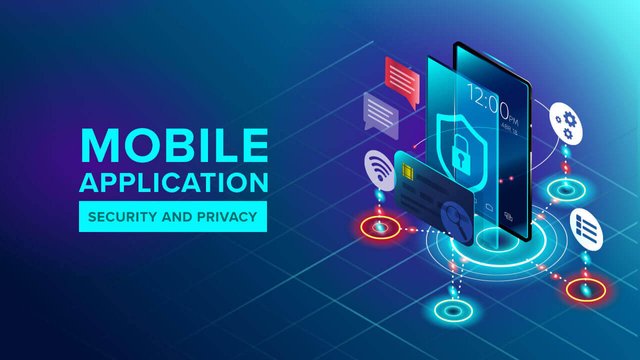The Ethics of Mobile Development: Designing Apps for a Responsible Future
In the ever-evolving realm of mobile development, the need for ethical considerations has become more crucial than ever. Beyond just functionality and aesthetics, the impact of mobile apps on users and society at large is profound. This blog delves into the Ethics of Mobile Development, emphasizing the importance of designing apps for a responsible future.
Understanding the Ethical Landscape
The ethical landscape in mobile development involves a conscientious approach to creating apps that prioritize user well-being and societal impact. As developers, we bear a responsibility to consider the consequences of our creations on individuals and communities.
User-Centric Design Principles in Mobile App Development
User-centric design principles are the foundation of ethical and responsible mobile app development. They guide the creation of apps that prioritize the needs, preferences, and well-being of users.
Here's a detailed exploration of key user-centric design principles:
1. Empathy:
Empathy is at the core of user-centric design. Understanding the emotions, goals, and challenges of users is essential for creating apps that resonate with their experiences. Developers should immerse themselves in the user's perspective to anticipate needs and design solutions that genuinely enhance the user's life.
2. User Research:
Conducting thorough user research is crucial for informed decision-making. This involves gathering insights into user behaviours, preferences, and pain points. Through surveys, interviews, and usability testing, developers gain a deep understanding of the target audience, enabling them to design apps that align with user expectations.
3. Accessibility:
Creating inclusive and accessible mobile apps ensures that everyone, regardless of abilities or disabilities, can benefit from the technology. User-centric design principles emphasize providing a seamless experience for users with diverse needs. This involves considerations such as intuitive navigation, adjustable text sizes, and compatibility with assistive technologies.
4. Usability:
Usability is a cornerstone of user-centric design. Apps should be intuitive and easy to use, minimizing the learning curve for users. Clear navigation, concise instructions, and a logical flow contribute to a positive user experience. Usability testing helps identify and address potential usability issues before the app reaches its audience.
5. Feedback and Iteration:
User feedback is invaluable in refining and improving app designs. Establishing channels for user feedback and actively incorporating user suggestions fosters a collaborative development process. Continuous iteration based on user input ensures that the app remains responsive to evolving user needs and preferences.
6. User Journey Mapping:
Understanding the user's journey within the app allows developers to design a seamless and enjoyable experience. User journey mapping involves visualizing every step a user takes, from initial interaction to task completion. This process helps identify pain points, opportunities for improvement, and moments that significantly impact user satisfaction.
7. Consistency Across Platforms:
In a multi-platform landscape, maintaining consistency is vital. User-centric design principles dictate that users should have a coherent experience regardless of the device or platform they use. Consistent visual elements, interactions, and functionality contribute to a unified and user-friendly app experience.
8. Personalization:
Recognizing and catering to individual user preferences enhances the personal connection users feel with an app. User-centric design involves incorporating personalization features, such as customizable settings, personalized content recommendations, and adaptive user interfaces. This tailored approach enhances user engagement and satisfaction.
9. Minimizing Cognitive Load:
User-centric design aims to minimize cognitive load by presenting information and functionality in a clear and straightforward manner. Simplifying complex processes, reducing unnecessary steps, and offering intuitive features contribute to a smoother user experience. This principle acknowledges that users should be able to achieve their goals with minimal mental effort.
10. Ethical Considerations:
Embedding ethical considerations in design decisions is integral to user-centric principles. This involves being transparent about data usage, respecting user privacy, and avoiding manipulative design practices. Ethical design ensures that users can trust the app and its developers, fostering long-term user loyalty.
By adhering to these user-centric design principles, developers can create mobile apps that not only meet user expectations but also contribute positively to their lives. User satisfaction, accessibility, and ethical considerations form the pillars of a design philosophy that prioritizes the human experience in the digital landscape.
Transparency and Data Privacy
One of the ethical pillars in mobile development is transparency. Users should have clear insights into how their data is collected, used, and stored. Respecting data privacy not only fosters trust but also aligns with the principles of responsible app design. Implementing robust security measures is crucial in safeguarding user information.
Combating Digital Addiction
With the prevalence of mobile devices, combating digital addiction has become a moral imperative. Ethical mobile development involves creating apps that respect users' time and attention. Implementing features that encourage mindful usage and providing options for setting usage limits contribute to a healthier digital ecosystem.
Real-World Examples
Examining real-world examples of ethical mobile development sheds light on best practices. Apps that prioritize mental health, implement fair pricing models, and actively engage in eco-friendly practices showcase the positive impact of ethical considerations. These examples serve as beacons, guiding developers toward responsible choices.
Navigating the Challenges
While ethical mobile development is imperative, it comes with its set of challenges. Balancing business goals with ethical considerations, addressing biases in algorithms, and staying abreast of evolving ethical standards are hurdles developers face. Acknowledging these challenges is the first step toward finding viable solutions.
The Path Forward: A Responsible Future
The path forward in mobile development is clear—a responsible future built on ethical foundations. By fostering a culture of continuous learning, collaboration, and ethical awareness, developers can contribute to a mobile landscape that prioritizes user welfare and societal good.
Conclusion
In conclusion, the Ethics of Mobile Development is a dynamic and evolving conversation. Designing apps for a responsible future involves a commitment to user-centric principles, transparency, and addressing the challenges head-on. By weaving ethics into the fabric of mobile development, we pave the way for a future where technology enhances lives responsibly.
